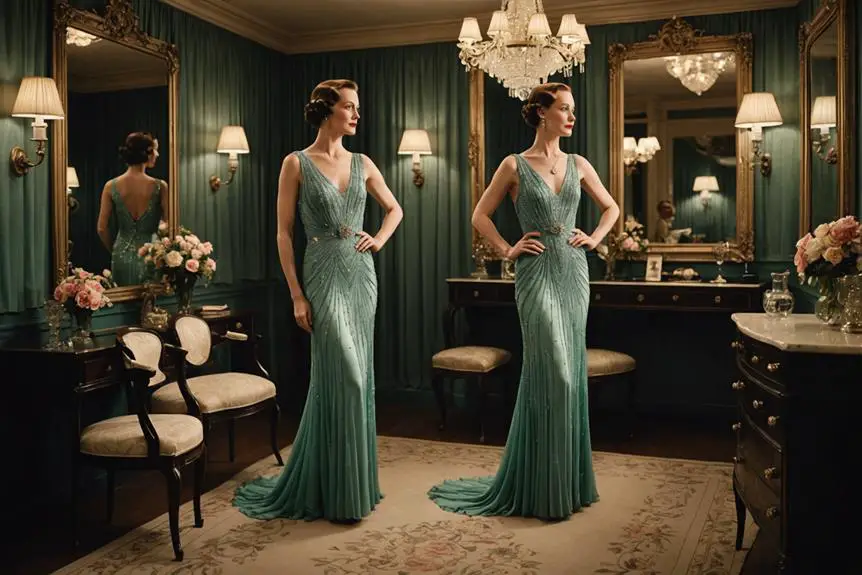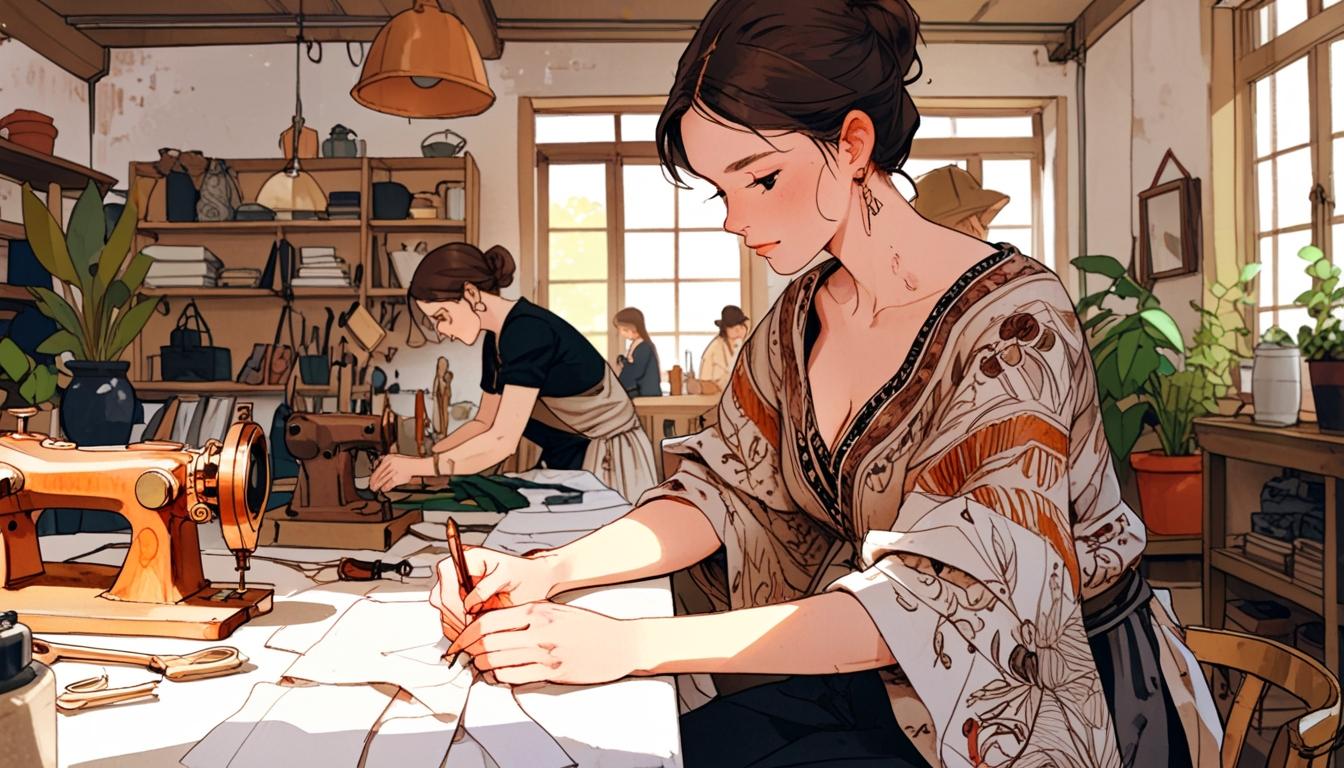You might not realize how Wallis Simpson, the Duchess of Windsor, transformed the fashion landscape of the 20th century with her unique style choices. Her collaborations with renowned designers and her penchant for tailored silhouettes have left a lasting impact on modern fashion. From her wedding day gown to her striking evening wear, each moment tells a story of elegance and rebellion. What drove her to embrace such bold fashion statements, and how did they shape the trends that followed? The answers might surprise you.
Early Life and Influences
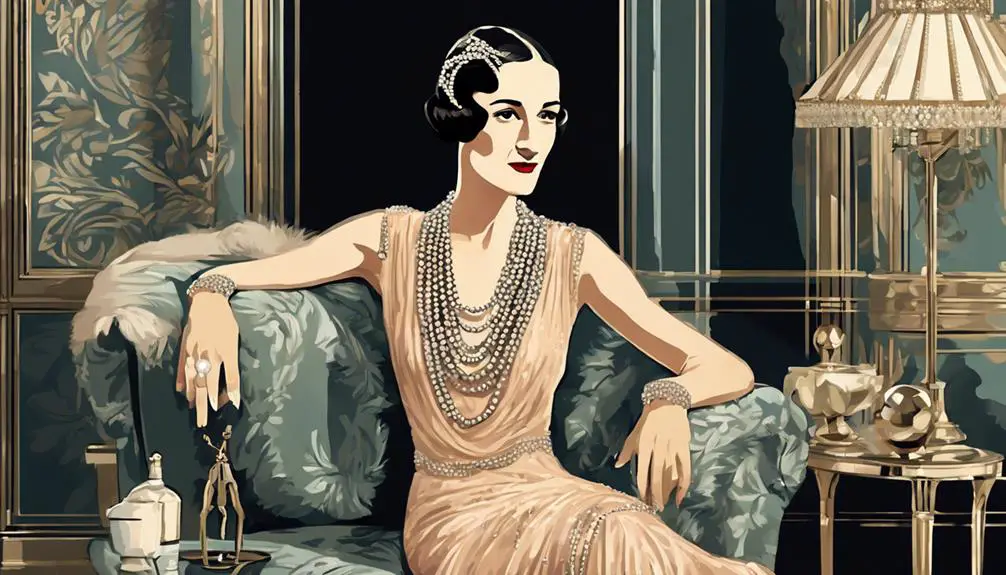
In her early life, Wallis Simpson faced a mix of privilege and hardship that shaped her future. Born Bessie Wallis Warfield on June 19, 1896, in Pennsylvania, she grew up in a wealthy family, but the social stigma from her parents' troubled marriage and her father's early death cast a shadow over her upbringing. After moving to Baltimore, Wallis encountered significant financial struggles, which compelled her to find solace in the world of fashion and high society. Attending a prestigious girls' finishing school in Maryland, she honed her sense of style and developed a love for social events.
By the 1920s, Wallis had transformed into a enchanting figure within elite social circles. Her flirtatious nature and magnetic personality made her a sought-after companion, enabling her to build relationships that would impact her life profoundly. Her first marriage to a navy pilot was marked by abuse, but her second marriage to Ernest Simpson took her to London, where she further immersed herself in high society. Here, Wallis navigated the complex dynamics of social hierarchy, effortlessly blending elegance with a touch of rebellion.
It was in the early 1930s that her encounters with Prince Edward sparked a turning point in her life. Their controversial relationship not only challenged societal norms but also set the stage for monumental changes, including Edward's abdication of the throne. Wallis Simpson's journey through privilege and adversity positioned her as a key figure in the world of fashion and society.
Signature Style Elements
Wallis Simpson's journey through high society not only influenced her social standing but also defined her distinctive style. As the Duchess of Windsor, your sense of style combined elegance with a flair for the dramatic, leaving an indelible mark on fashion history. You often favored tailored silhouettes that gracefully accentuated your figure, showcasing luxurious fabrics that spoke to your refined taste.
Monochromatic color schemes became a hallmark of your wardrobe, allowing you to convey an air of sophistication and timeless elegance. The striking simplicity of your outfits was often elevated by bold accessories, particularly statement jewelry. These eye-catching pieces were integral to your signature look, transforming even the most understated gowns into unforgettable ensembles.
When you collaborated with renowned designers like Elsa Schiaparelli and Mainbocher, you created custom pieces that perfectly blended British and French fashion, embodying a unique style that was both contemporary and classic. The iconic Elsa Schiaparelli gown, for instance, showcased not only your love for innovative design but also your bold approach to fashion.
Your impeccable hairstyle, characterized by a middle part and a dark chignon, was meticulously maintained and became a defining aspect of your overall aesthetic. This attention to detail, coupled with your choice of outfits, established you as a true fashion icon. In every appearance, you demonstrated that style is not just about clothing; it's about how you carry yourself and the confidence you exude.
Memorable Fashion Moments
Several unforgettable moments defined Wallis Simpson's fashion legacy, each showcasing her remarkable ability to blend elegance with daring creativity. One standout occasion was her appearance in Berlin in 1936, where she donned a low-cut black velvet evening gown that not only highlighted her sophisticated poise but also set the tone for her iconic status in the fashion world. This was just the beginning of her memorable fashion journey.
Fast forward to 1937, when Wallis captured the spotlight in a stunning white gown during a Vogue shoot, designed by the talented Elsa Schiaparelli. This piece, adorned with surrealist elements crafted in collaboration with artist Salvador Dalí, pushed the boundaries of fashion and showcased her daring spirit. However, her most significant moment arguably came on her wedding day in June 1937, when she wore the breathtaking Wallis blue gown by Mainbocher. This gown has since become a cornerstone in fashion history, symbolizing her shift to the Duchess.
In 1941, Wallis posed for a royal portrait, dressed in a blue striped sequined Mainbocher jacket over a classic white gown that continued to emphasize her refined taste. And let's not forget her 1942 Bahamas vacation look—a chic blue and red printed dress that beautifully blended high fashion with casual elegance. Wallis Simpson's fashion moments not only defined her personal style but also left an indelible mark on the annals of fashion history, ensuring her legacy as a true style icon.
Collaborations With Designers
Throughout her fashion journey, Wallis Simpson forged remarkable collaborations with iconic designers that defined her signature style. One of her most notable relationships was with the legendary Elsa Schiaparelli, whose imaginative designs perfectly complemented Wallis's bold persona. Together, they created unique pieces that showcased her individual flair, blending art and fashion in ways that captivated audiences.
Wallis also frequently donned custom-made gowns from American couturier Mainbocher, including the unforgettable blue gown she wore for her wedding to King Edward VIII. This gown not only highlighted her elegance but also marked a pivotal moment in fashion history. Wallis's connection with renowned artists didn't stop there; her friendship with Salvador Dalí inspired some truly innovative designs. One striking gown incorporated surrealist elements, reflecting the artistic spirit of the time and further emphasizing Wallis's desire to stand out.
Her collaborations with leading fashion houses underscored the significance of bespoke fashion, as each piece was tailored specifically for her, allowing Wallis to express herself authentically. These exclusive designs not only set trends but also inspired countless designers in the early to mid-20th century. It's clear that Wallis Simpson wasn't just a fashion icon; she was a trailblazer who embraced creativity and individuality. Through her partnerships with extraordinary designers, she created a legacy that continues to influence the world of fashion today.
Impact on Fashion Trends
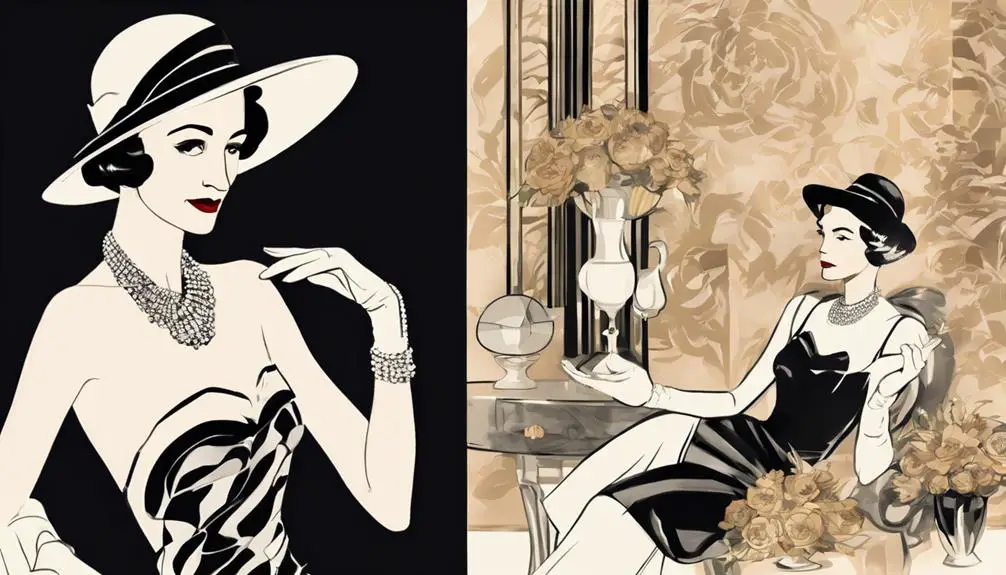
What impact did Wallis Simpson have on fashion trends? The Duchess of Windsor spent her life not just as a beautiful woman but as a fashion icon whose influence reshaped women's clothing. Her marriage to the Duke of Windsor marked a turning point in style, popularizing the "little black dress" as a wardrobe staple. This classic piece became synonymous with elegance, thanks to Simpson's bold choices and impeccable taste.
Her collaborations with renowned designers like Elsa Schiaparelli and Mainbocher in the 1930s and 1940s elevated bespoke fashion, showcasing the importance of personalized tailoring. Simpson favored tailored silhouettes and monochromatic color schemes, setting new standards for elegance in royal and high-society attire. This shift encouraged women to embrace sophisticated, streamlined looks that exuded confidence and refinement.
Simpson's striking outfits, such as her stunning sequinned gown in Paris and the iconic Wallis blue gown for her wedding, inspired legendary designers like Christian Dior and Coco Chanel, who drew upon her unique aesthetic in their own collections. Additionally, her exquisite jewelry, particularly her Cartier pieces, reflected a seamless blend of luxury and personal style, making bold statements without overshadowing her overall look.
In essence, Wallis Simpson's fashion choices not only defined her own identity but also left an indelible mark on the fashion landscape, forever changing the way women approached elegance and style.
Legacy and Cultural Significance
Wallis Simpson's enduring legacy in fashion is a tribute to her unique ability to blend personal style with high fashion, making her a cultural icon of the 20th century. Her influence on fashion is both profound and far-reaching, inspiring renowned designers like Coco Chanel and Christian Dior, who were captivated by her distinctive looks. One of her most celebrated pieces, the Wallis blue Mainbocher gown worn at her wedding to Edward VIII, exemplifies timeless elegance and sophistication, setting trends that resonated in post-war fashion.
Simpson transformed the perception of women's fashion, elevating it to a form of self-expression and artistry. Her ability to marry high fashion with personal flair helped pave the way for modern femininity and independence, allowing women to embrace their individuality through clothing. As a cultural icon, she has been the subject of numerous films, books, and media representations, demonstrating the fascination with her life and style that continues to captivate audiences today.
Her legacy as a fashion pioneer is preserved through exhibitions and retrospectives, showcasing her contributions to royal fashion and the impact she had on societal norms. Wallis Simpson not only redefined fashion during her time but also left an indelible mark on the future, influencing contemporary discussions around personal style and status. In this way, her legacy endures, reminding us that fashion is more than just clothing; it's a powerful statement of identity and cultural significance.
Iconic Appearances and Events
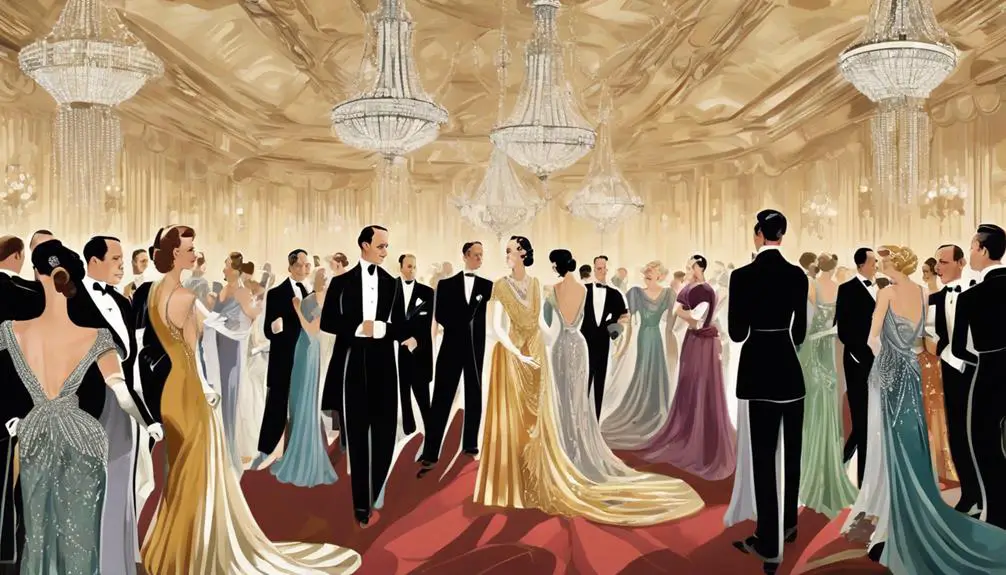
Simpson's fashion journey is highlighted by a series of iconic appearances that showcase her unique style and elegance. One of the most memorable moments occurred during her wedding to King Edward VIII, the Duke of Windsor, in 1937. She wore a stunning black gown that became a symbol of her sophisticated aesthetic, leaving a lasting mark on royal fashion. This wedding took place amid significant historical turmoil, yet Simpson's elegance shone through, enchanting the world.
In 1936, a Vogue shoot in Paris featured Simpson in a breathtaking white painted gown designed by the talented Elsa Schiaparelli. This ensemble was further elevated by the artistic touch of Salvador Dalí, creating an unforgettable visual statement. Fast forward to 1941, when she stunned audiences in a royal portrait, donning a blue striped sequined Mainbocher jacket over a classic white gown, perfectly embodying sophistication.
Her effortless style continued to impress during a 1942 vacation in the Bahamas, where she sported a flattering blue and red printed dress that highlighted her grace. Finally, at the coronation of Queen Elizabeth II, Simpson made a statement in a blue fit-and-flare shift dress, embellished with an ornate brooch, solidifying her status as a fashion icon within the Royal Family.
These iconic appearances not only reflect Wallis Simpson's impeccable taste but also her ability to influence fashion trends that resonate even today.
Frequently Asked Questions
What Was Wallis Simpson Famous For?
Wallis Simpson, an American divorcée, became famous for her royal scandal when she married King Edward VIII. This controversial union led to his abdication, and she later became known as the Duchess of Windsor.
Did Wallis Simpson Wear Dior?
Yes, Wallis wore Dior, showcasing his iconic designs. You can see how Dior's influence shaped Wallis's style, reflecting the fashion evolution of her time and solidifying her status as a fashion icon.
What Happened to Wallis Simpson's Wedding Dress?
Wallis Simpson's wedding dress, a stunning reflection of her personal style, now resides at the Metropolitan Museum of Art. It embodies a fashion legacy intertwined with royal controversy, marking a pivotal moment in history.
Who Made the Wardrobe for the Duchess of Windsor?
The Duchess of Windsor's wardrobe showcased designer collaborations that reflected her personal style. Her fashion evolution, influenced by royal status, included pieces from renowned designers like Elsa Schiaparelli, Mainbocher, Vionnet, and Christian Dior.
